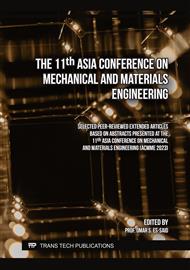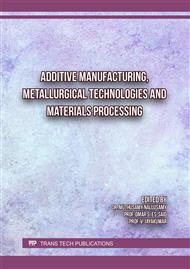p.9
p.15
p.23
p.35
p.55
p.67
p.75
p.83
p.91
Effect of Niobium (Nb) Content on Alloy 625 Weld Overlay
Abstract:
Ni-based superalloys, including Alloy 625, are known for their high strength and excellent resistance to corrosion at high temperatures. Alloy 625 is widely used in geothermal, petrochemical, and power generation industries due to its exceptional performance in harsh environments. It is an austenitic alloy composed of Ni, Cr, Mo, and Nb, with high Cr content (~20 wt%) contributing to its superior corrosion resistance, and solid solution strengthening is attributed to the presence of other alloying elements such as Mo, Nb, and Fe. However, during welding with Alloy 625, Mo and Nb tend to segregate aggressively towards the liquid. This study will investigate the effect of reducing the level of Nb in commercial alloy 625 for weld overlay cladding on carbon-manganese steel. The CALPHAD method will be used to obtain the phase equilibria by thermodynamic simulations of compositions ranging from 0% to 100% dilution. This study is crucial to the weld overlay cladding sector as it aims to identify the best properties of CRA material suitable for highly corrosive environments.
Info:
Periodical:
Pages:
55-64
Citation:
Online since:
December 2023
Keywords:
Price:
Сopyright:
© 2023 Trans Tech Publications Ltd. All Rights Reserved
Share:
Citation:



